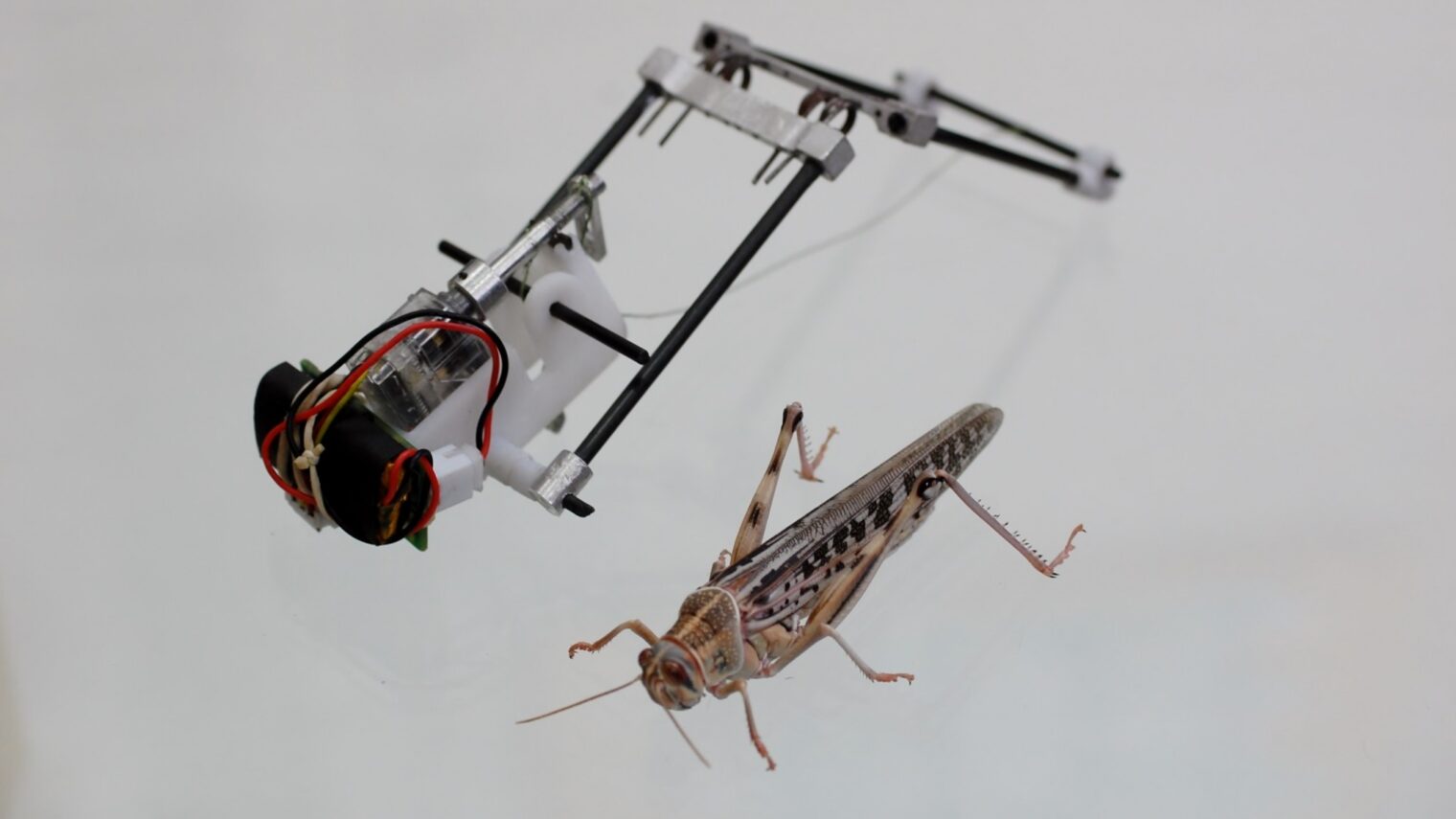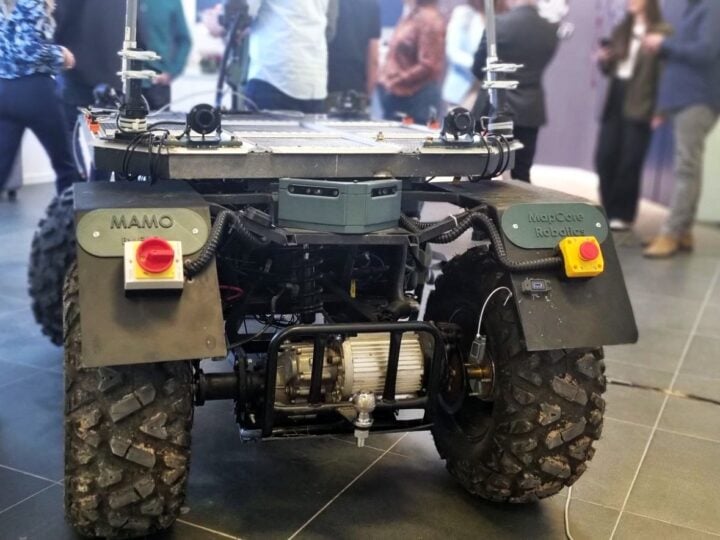Inspired by the common locust, a tiny high-jumping robot developed in Israel could be used for sending lifesaving reconnaissance data to human rescue teams in disaster situations, or for cleaning up oil spills or for gathering intelligence – and many other difficult missions unsuited to large robots and humans.
The five-inch-long featherweight robot is dubbed “TAUB” (for Tel Aviv University and ORT Braude College), the two Israeli academic institutions involved in the inventive collaboration.
The zoologists and mechanical engineers involved in the project say TAUB can jump 11 feet high — more than twice the height of similar-sized robots — and cover a horizontal distance of 4.5 feet in one leap.
“How our prototype could be used is a matter of imagination,” says Prof. Amir Ayali, a TAU zoologist on the multidisciplinary team whose aim was “to build the best jumping robotic system that we could.”
Ayali tells ISRAEL21c that small, inexpensive robots are widely viewed as the wave of the future. They could be grouped to accomplish tasks more efficiently and cheaply than can today’s larger robots. Or they can be used singly in environments where small size is an advantage, such as searching under rubble.
TAUB boasts an extra dimension of capability. “Jumping is better for rough terrain,” explains Ayali. “Today you have drones and quadrupeds, but they are extremely demanding energy-wise. Ours is extremely efficient and is a beautiful example of bio-inspired technological innovation. It could be used in any case where you don’t want to, or cannot, send humans or huge expensive robots.”
Three-stage jump mechanism
The scientists used a 3D printer to make two prototypes of the 23-gram robot from ABS plastic (the same material LEGOs are made of). The robot’s legs are composed of stiff carbon rods and steel wire springs. It is powered by a small on-board battery and remotely controlled through an on-board microcontroller.
TAUB is not an exact replica of a locust, Ayali stresses, but it has the specific biomechanical features of the locust’s unparalleled three-stage jump mechanism.
In the first stage, the legs are bent in preparation. Then the legs are locked in place at the joint. Finally, a sudden release of the flexor muscle on the upper leg unlocks the joint and causes a rapid release of energy. This creates a fast-kicking movement of the legs that propels the locust into the air.
https://www.youtube.com/watch?v=Xfm7p3lTn1k
Like the locust, which uses stored mechanical energy to enhance the action of its leg muscles, the robot’s high-jump is powered by stored energy in its torsion springs, the researchers explain in a paper about the project published in the journal Bioinspiration & Biomimetics.
They are currently working on a gliding mechanism that will enable the robot to extend its jumping range, lower its landing impact, execute multiple steered jumps and stabilize while airborne. These features would expand the possible field applications for TAUB in search-and-rescue missions and in reconnaissance operations in rough terrain.
Other collaborators on the project include TAU engineering students Valentin Zeitsev and Omer Gvirsman, Gabor Kosa of TAU’s Faculty of Engineering, and Uri Ben-Hanan and Avi Weiss of the department of mechanical engineering at ORT Braude College in Karmiel.

















